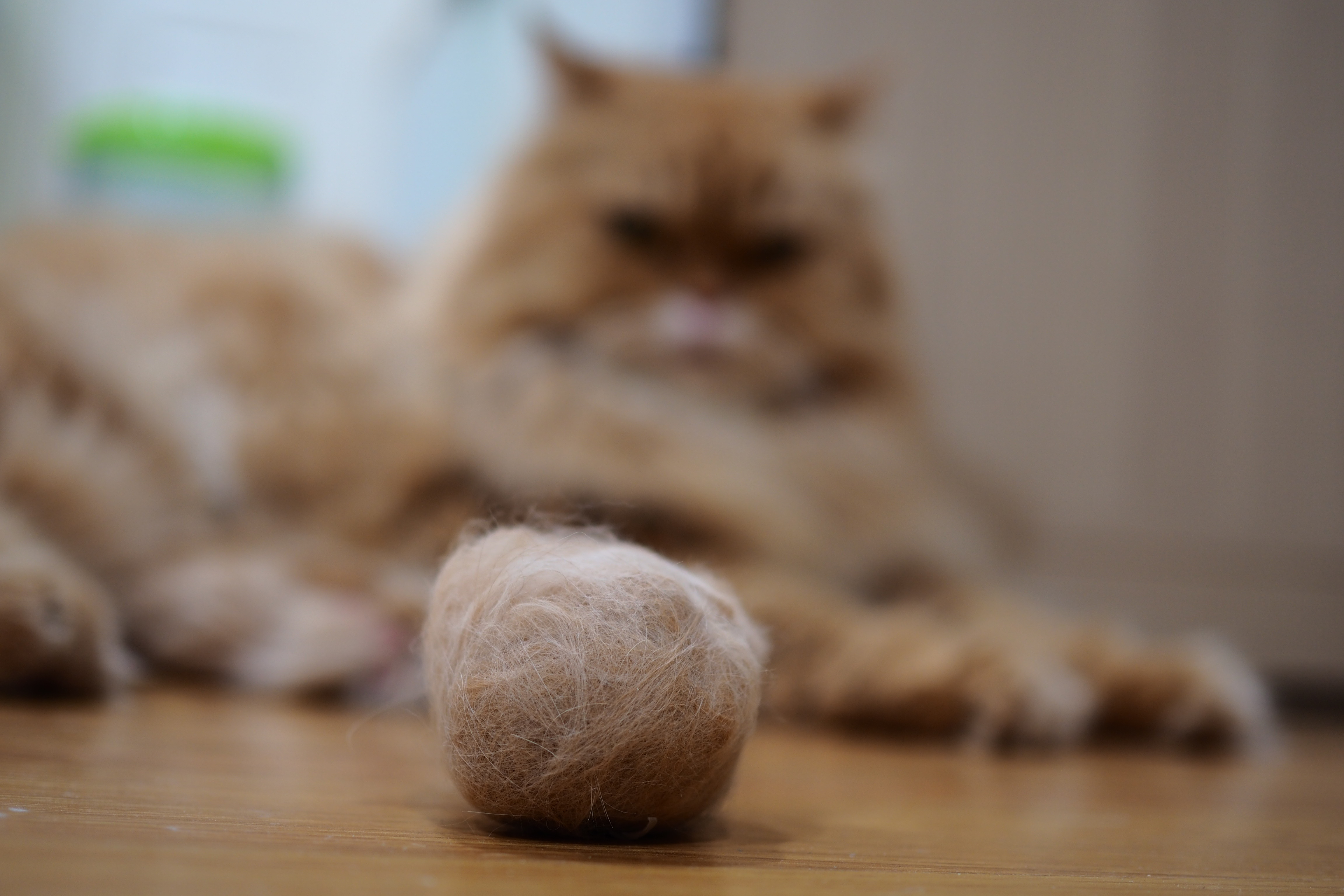If you’re a devoted pet parent, the health and happiness of your cat are paramount. Hairballs are notably common that are easily managed with the right knowledge and care. Understanding how to help a cat with hairballs, recognizing hairball symptoms and preventing hairballs from becoming a problem are essential aspects of caring for your furry companion.
Recognizing Hairball Symptoms in Cats
Hairballs, though often considered a normal part of cat ownership, can cause discomfort and even health issues for your pet. Recognizing the symptoms is the first step to providing relief. Hairball symptoms in cats include frequent gagging, retching, vomiting, constipation, or lack of appetite. If these symptoms become regular or are accompanied by lethargy or a decrease in grooming behavior, it’s crucial to consult your veterinarian, as these could be signs of a more serious underlying issue.
Preventing Hairballs in Cats
Prevention is key when it comes to managing hairballs. Regular grooming is the most effective method to prevent hairballs from forming. By brushing your cat daily, you reduce the amount of hair they ingest during self-grooming. For long-haired breeds, this practice is especially important. Investing in a high-quality brush or grooming glove can make this bonding experience enjoyable for both you and your pet.
Diet also plays a crucial role in preventing hairballs. Specialized cat foods and treats formulated to promote a healthy coat and aid in the digestion of hair can significantly reduce the formation of hairballs. These products often contain high levels of fiber, which helps hair pass through the digestive tract more easily.
Additionally, consider adding a hairball remedy or lubricant to your cat’s routine. These products are designed to help ingested hair pass through the digestive system, preventing the formation of hairballs. Always consult with your veterinarian before introducing any new supplement to ensure it’s a safe and effective option for your cat.
How to Help a Cat with Hairballs
Despite your best efforts in preventing hairballs, your cat may still occasionally suffer from them. Understanding how to help a cat with hairballs is crucial in these instances. The first line of defense is a well-balanced diet with adequate fibre to promote healthy digestion. In some cases, your veterinarian may recommend a laxative or a special diet to help eliminate hairballs in your cat. However, these should be used under veterinary supervision to avoid any adverse effects.
Keeping your cat hydrated is also essential. Encourage water intake by providing fresh water daily or consider using a pet water fountain, which can entice cats to drink more frequently. Proper hydration helps keep the digestive system running smoothly, reducing the risk of hairballs forming in your cat.
Lastly, maintain a regular grooming schedule. Not only does this reduce the amount of hair your cat ingests, but it also serves as an opportunity to bond with your pet and monitor their health. Pay attention to any changes in your cat’s grooming habits, as excessive grooming can indicate stress or skin issues that may lead to more severe hairball problems.
Wrapping Up: Key Steps to a Hairball-Free Cat
Hairballs are a common issue for many cats but understanding how to help a cat with hairballs, recognizing hairball symptoms in cats, and implementing strategies for preventing hairballs can significantly improve your cat’s quality of life. Regular grooming, a proper diet, and adequate hydration are key elements in managing this condition. Should you notice any unusual symptoms or if your cat’s hairball issue persists, seeking veterinary advice is always the best course of action. With the right care and attention, you can ensure your feline friend remains happy, healthy, and hairball-free.


![[IE] How to Help Your Cat with Hairballs: A Pet Parent's Guide to Symptoms and Prevention [IE] How to Help Your Cat with Hairballs: A Pet Parent's Guide to Symptoms and Prevention](https://cdn11.bigcommerce.com/s-nuuvoj7ntg/images/stencil/190x250/uploaded_images/shutterstock-791104000.jpg?t=1737038078)